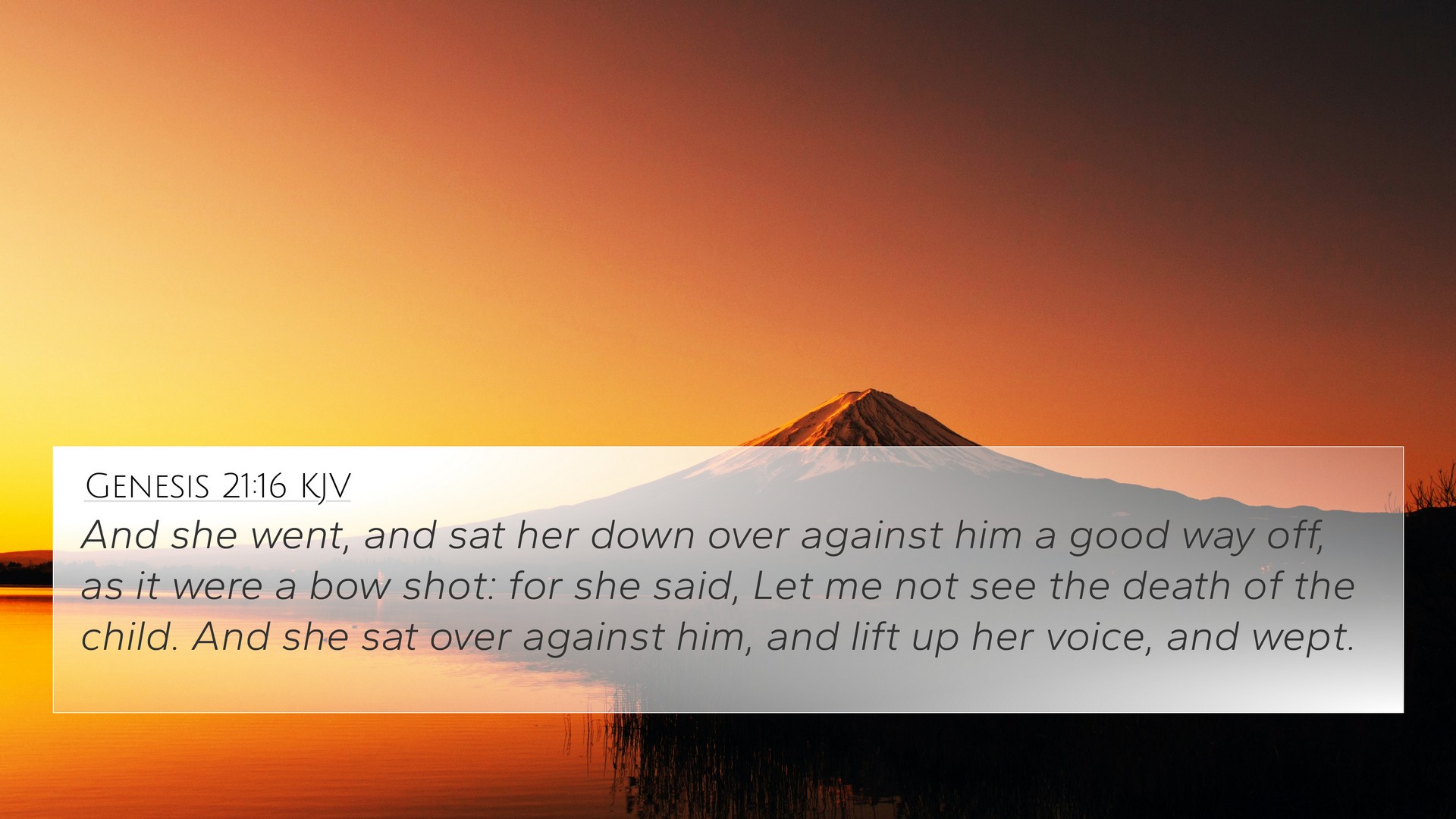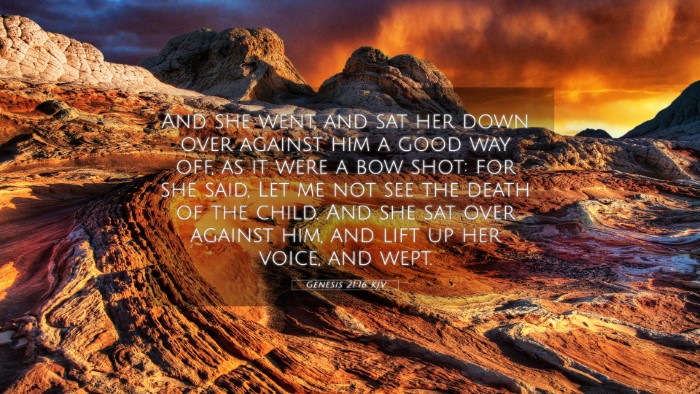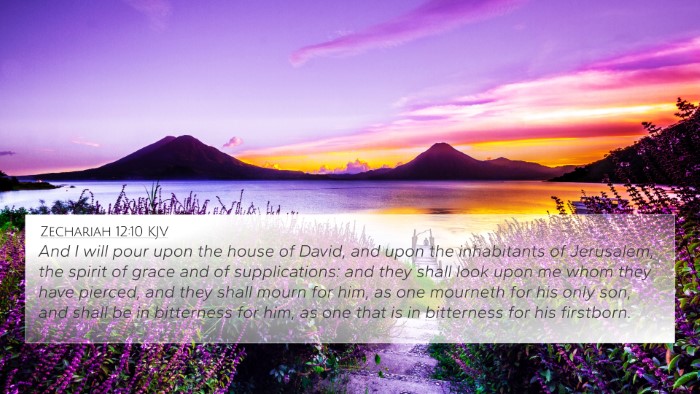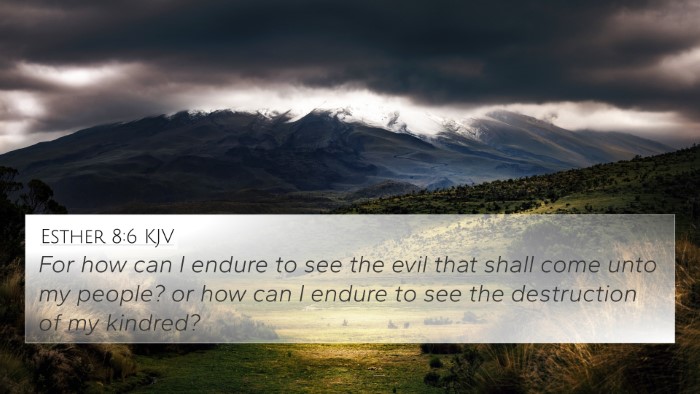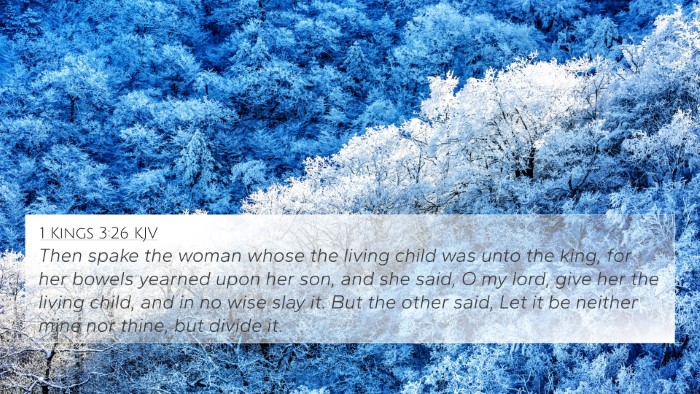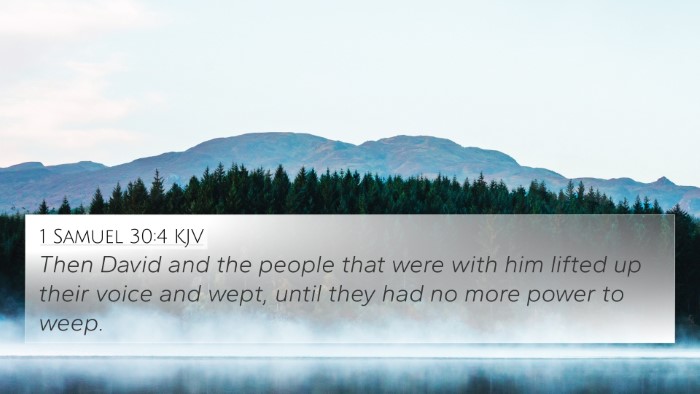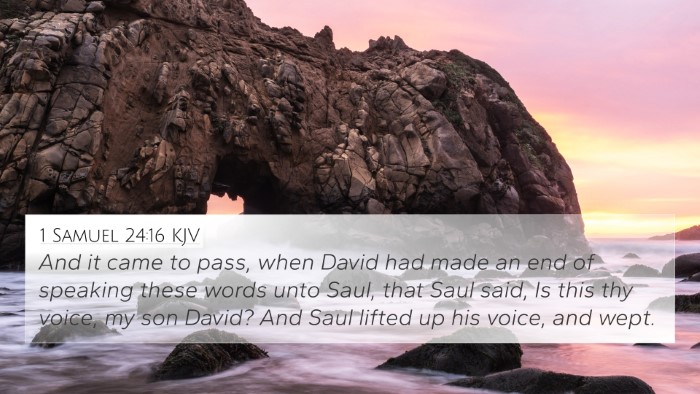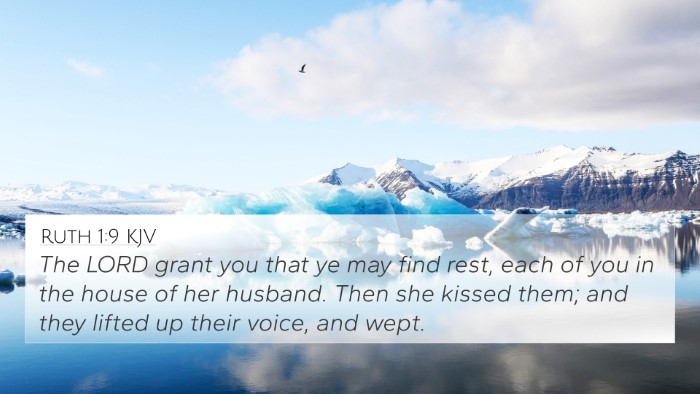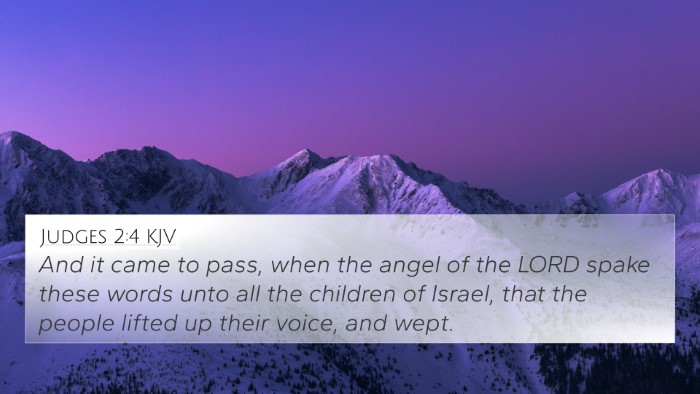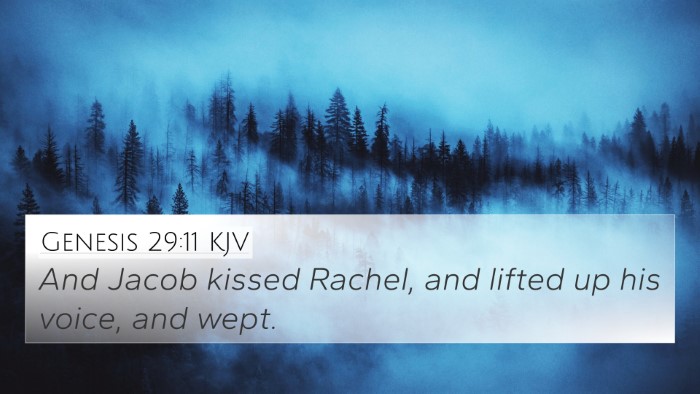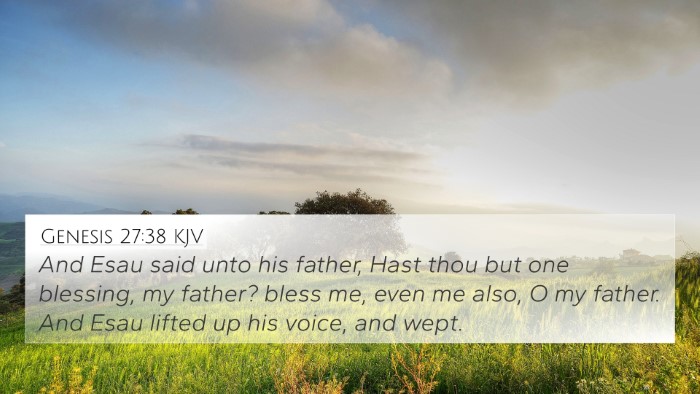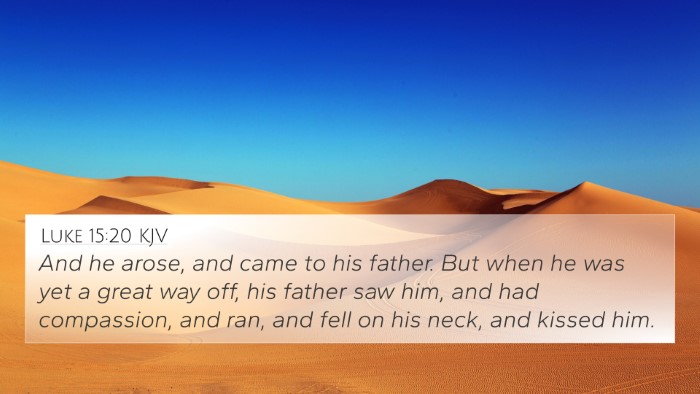Understanding Genesis 21:16
Genesis 21:16 states: "Then she went and sat down across from him at a distance of about a bowshot; for she said, 'Let me not see the death of the boy.' So she sat opposite him and lifted her voice and wept."
Summary of the Verse
This verse highlights a profound moment of desperation and maternal sorrow. Hagar, the mother of Ishmael, finds herself in a dire situation, having been cast out with her son, Ishmael. The emotional weight of her circumstances is palpable as she distances herself to avoid witnessing her son's suffering and impending death.
Commentary Insights
- Matthew Henry:
Henry remarks that Hagar’s action symbolizes the natural instinct of a mother to protect her child, even in moments of despair. She finds herself alone, reflecting on the terrible human condition, where faith struggles against fear.
- Albert Barnes:
Barnes emphasizes Hagar’s emotional turmoil. He notes that her prayer and weeping are not just expressions of distress but also signify a plea for divine intervention. It portrays the depth of her maternal love and the heart-wrenching situation of abandonment.
- Adam Clarke:
Clarke offers a detailed analysis of the geographical and historical context of Hagar’s predicament. He elaborates on the significance of location, indicating how isolation amplifies her despair, while underscoring God’s past provisions for her and Ishmael.
Thematic Connections
Genesis 21:16 resonates with various themes in the Bible, including divine provision, sorrow, maternal love, and the struggles of the marginalized. The despair in Hagar's heart reflects broader human experiences of hopelessness and the need for divine reassurance.
Cross-References
- Genesis 16:7-11: God's initial promise and encounter with Hagar highlights her significance and foreshadows her future.
- Psalm 34:18: Reflects God’s closeness to the brokenhearted, paralleling Hagar’s sorrow.
- Isaiah 49:15: God's missing attention to mothers' plight symbolizes His unwavering care.
- Matthew 15:22: The Canaanite woman’s desperate plea illustrates a theme of parental desperation in faith.
- John 4:7-14: The Samaritan woman’s encounter reflects themes of isolation and spiritual renewal.
- Romans 12:15: "Rejoice with those who rejoice, weep with those who weep," illustrates how Hagar's sorrow is part of the human experience.
- Hebrews 11:32-34: The mention of faith exemplified through suffering marks a commonality between Hagar and other Biblical figures.
- Galatians 4:22-31: A thematic analysis of Hagar and Sarah’s relationship through the lens of covenantal theology.
- 1 Peter 5:7: Encouraging believers to cast their anxieties upon God encapsulates Hagar’s silent plea.
- Revelation 21:4: God's promise to wipe away tears connects to the ultimate restoration from sorrow.
Conclusion
Genesis 21:16 serves as a poignant reminder of the trials faced by Hagar, representing countless mothers' struggles throughout the scriptures. By cross-referencing related verses, we can illustrate the continuity of themes such as maternal love, despair, and divine mercy across the Bible, reinforcing the interconnectedness of these sacred texts.
Tools for Further Study
- Bible concordance
- Bible cross-reference guide
- Cross-reference Bible study resources
- Comprehensive Bible cross-reference materials
- Methodologies for identifying connections between Old and New Testament
Final Thoughts
For those searching for deeper understanding, exploring the narrative of Hagar alongside scripture references can enrich one's spiritual journey and illustrate God's enduring compassion. Understanding Genesis 21:16 in the context of other Bible verses allows us to appreciate the broader biblical narrative, revealing the thematic richness of God's engagement with humanity.
